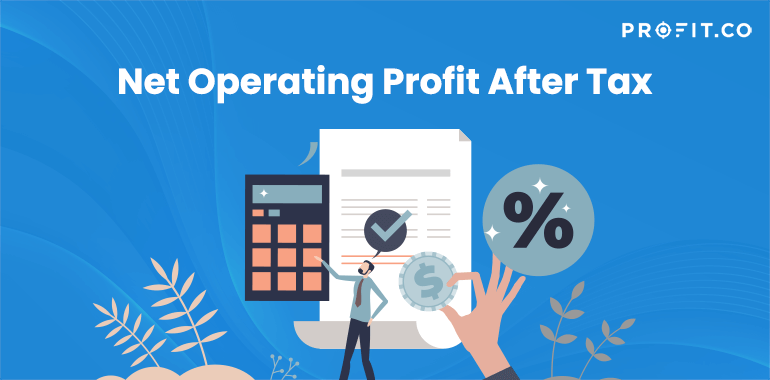If you wanted to know what the Net Operating Profit after Tax is and how it works, you came to the right place. Net Operating Profit after Tax, or NOPAT for short, is a measurement of profitability that estimates the theoretical amount of money a firm could deliver to the shareholders if it had no debt.
So, this is the amount of money a firm obtains from its operations after taxes without regard to interest payments. If the firm didn’t have obligations on the books, it would have the ability to distribute the entire amount of cash to its shareholders once the year ends.
If you’d like to find out more, keep reading this article, as it provides more information.
NOPAT Definition
NOPAT is used by creditors and investors in order to measure how profitable the operations of the firm are and if they can pay debt obligations and shareholders. Also, it’s used like a gauge because the measurement is not an exact one. The accrual accounting method usually creates a timing difference between the book purpose recognized earnings and tax purpose recognized earnings. Therefore, there may be a difference between the amount calculated and the money that can be distributed to shareholders.
Moreover, the calculation is used by analysts to show how profitable the operations of a firm are without taking the financial structure into consideration. So, NOPAT is considered the most accurate operating efficiency for leveraged businesses.
Analyzing NOPAT
Basically, NOPAT is used for more than estimating the cash that a company could deliver to shareholders if it didn’t have debt. It also calculates FCFF (Free Cash Flow to Firm) and EVA (Economic Value Add). These numbers are used in order to conduct business valuation exercise and M&A targeting of possible companies. If the acquisition is analyzed, investors want to understand the main efficiency of a company without the impact of debt. It is relevant because, if they acquire the company, they might replace the debt with their own funds.
What is the formula?
There is a specific formula that allows you to calculate the NOPAT. You have to multiply a firm’s operating income by 1 minus the corporate tax rate. The formula looks like this:
In case there is no income statement available and figuring out the operating income of the firm is not possible, you can do something else. There is the option of calculating the net operating profit after tax equation using the net income by backing out the payments of interest like this.
You can find the interest expense, operating profit and net income on the income statement. The tax rate can, sometimes, be found in front of the financial statements, but not all the time.
You can also find it by looking up the corporate profits for the year in the IRS publications. There’s also the option to check the financial statement notes and management discussion and analysis. If not, you should know that public companies may have public records of their tax rates.
To conclude, this article was meant to help a beginner understand NOPAT and its importance in finance. Hopefully, it was helpful enough, and you now have one more piece to the puzzle.
